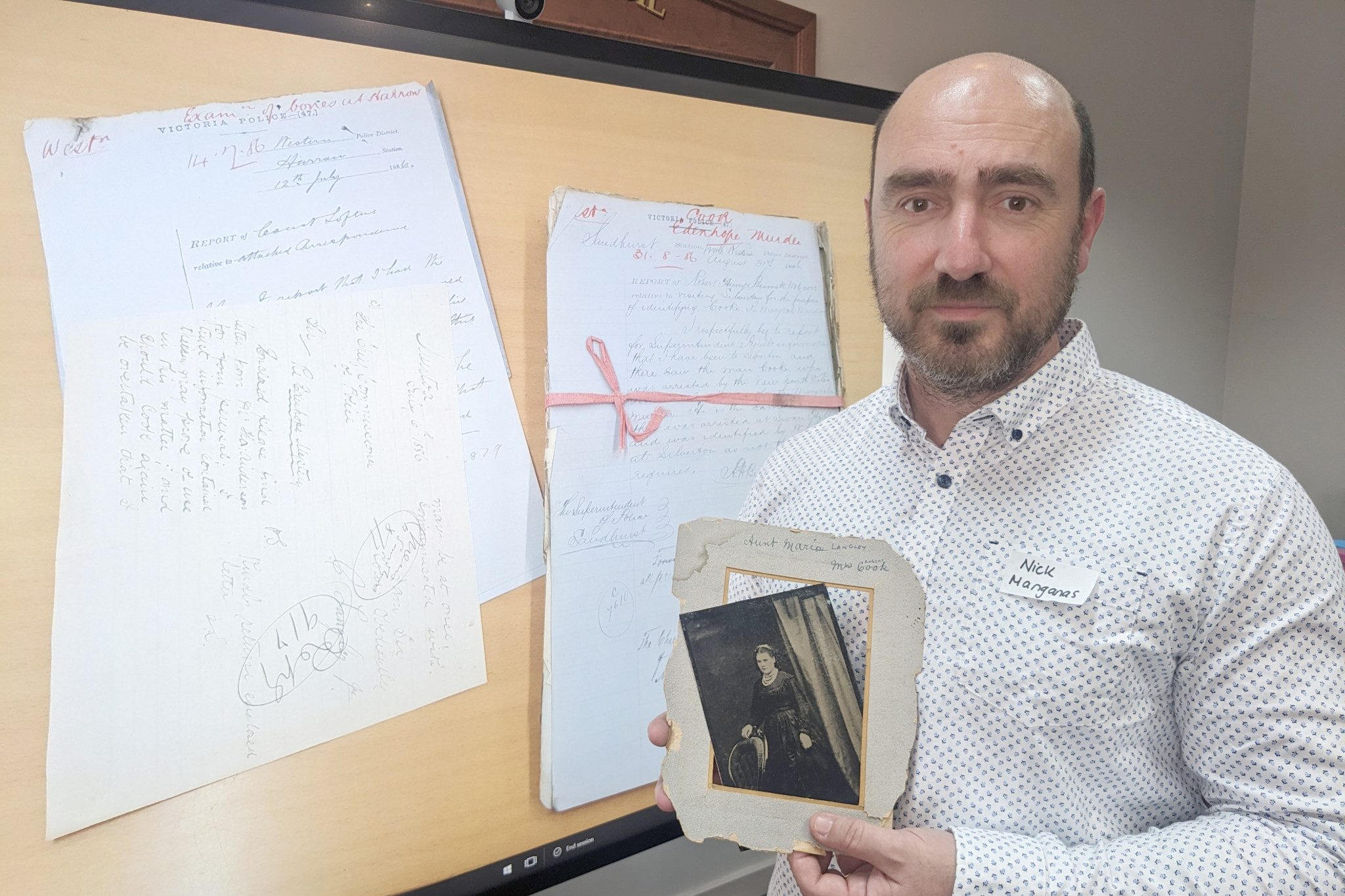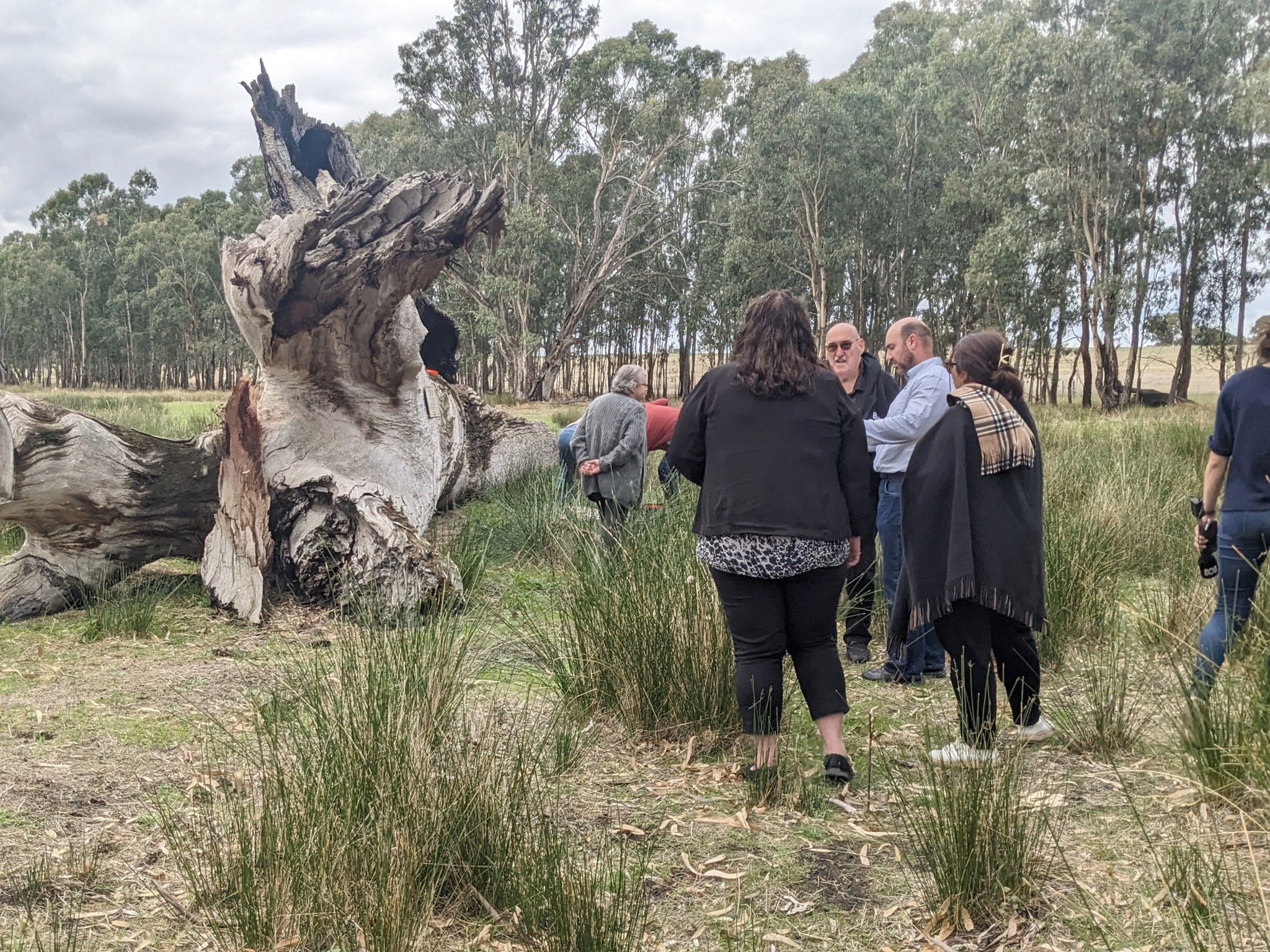General News
15 June, 2024
A remarkable effort to solve a tragic riddle
Historian Nick Manganas is continuing his hunt for information on two mysterious and intriguing deaths at Charam near Edenhope in 1874.

The victims were Maria Cook, née Langley, and her daughter Louisa, who was just 18 months old.
Mr Manganas has put out a call for information, which has Wimmera links at Charam near Edenhope, Jung, and Ashens between Murtoa and Rupanyup.
"I'm after photographs, sketches, diaries, reports – anything that might shed some light on these mysterious murders," he said.
The Cook family was on its way from Mount Gambier SA, to the Horsham area when the murders occurred. Their bodies went undiscovered for a decade.
Maria's husband Robert Cook was the main suspect but disappeared, and all attempts to locate him were unsuccessful.
Mr Manganas, who is writing a book on the murders, said people might have information on the Langley family, who were prominent landowners in the Dunmunkle area; on their murdered daughter Maria; on Maria's husband, whose brother John was a hotelier at Jung; on Maryvale Station at Charam near Edenhope; or on little Louisa's father, Joseph Sugars of Mount Gambier SA.
He is using oral histories, diaries and interviews from South Australian archives to discover facts about the lives of new arrivals in Port Adelaide in the 1850s.
"For this book I'm writing, I'm hoping to paint a picture of the time Maria grew up in and the background to her life until her marriage in 1874," he said.
"Apart from a small number of photographs there are really very few sources that tell us about Maria."
Records showed at least five murders were committed at Maryvale Station between 1855 and 1874.
"One, an Indigenous man discovered in 1865, bore similarities to Maria and Louisa's murders," Mr Manganas said.
"The arms of the deceased were also strapped behind his back with a stirrup leather."
Mr Manganas said Joseph Sugars had promised Maria's father he would marry her but returned to Mount Gambier too late, after she had already married Robert Cook.
Another recent discovery was of a network of friends around the Cooks who aided in hampering the investigation and subsequent chase for Cook.
Suspects were pursued to Adelaide, Swan Hill, Broken Hill, Serviceton, Kangaroo Island and Western Australia - but all to no avail.
Mr Manganas is based in Sydney. He can be contacted at mangonick415@gmail.com

Wimmera triple murder full of endless intrigue
The details of a complex triple murder near Edenhope have baffled Wimmera people for nearly 150 years.
On a March evening in 1874 the lives of three people were cruelly ended at Charam, north-east of Edenhope on the then Maryvale Station.
The victims were a young mother Maria Langley Cook, her toddler daughter Louisa aged 18 months and a traveller, Mr Quinn, who met up with the group at their overnight camp.
Their bodies went undiscovered for a decade.
It's a murder mystery with everything: suspense, intrigue, missing bodies, suspicious characters, fake identities, innocent parties, hidden bodies, "invisible" suspects, brush-offs, false references, questionable police actions and long-delayed burials.
The dramas play out at numerous Wimmera locations: Charam near Edenhope, Jung and Murtoa.
The man believed to have been responsible for the three murders was never apprehended.
But in 1888 a body was found in Serviceton's railway dam and identified as the suspected murderer - Maria's husband Robert Cook - using an alias McNally.
Now a few more twists have been uncovered about this sad story.
Sydney history teacher Nick Manganas, while researching the incidence of the bubonic plague in Melbourne and Sydney at the turn of the 20th century, chanced across a news item that included the words "Edenhope" and "murders".
He set out to discover more and, after several years of research, continues to pursue the story behind the murders.
He explained to a gathering at Edenhope of Langley relatives from across the state - along with members from Edenhope and District Historical Society, Edenhope Tourist Society president Helen Mulraney Roll, and geologist Ian Lewis of Mt Gambier - the importance of investigating the murders and keeping the story alive.
"This is not a story: it's people reality," he said.
"It's enough to stop you from breathing - and it doesn't pass with time."
Mr Manganas's persistence has led him to pursue the fate of Maria and her daughter Louisa, both murdered at Charam before their bodies were moved about three kilometres from Sheepwash Swamp to a site under a huge redgum.
The gruesome find of the remains of the mother and child were not discovered for 10 years after their disappearance when a party of shearers made the find.
The bodies had been carefully placed, covered with logs and set on fire.
The murdered body of the traveller, Mr Quinn, was found two years later about a kilometre from the other two.
Maria's father and step-mother had left South Australia and settled on land at Ashens between Murtoa and Rupanyup.
They waited in vain for their daughter, their grandchild and her new husband to join them in the Wimmera, but were unable for years to find any information about their disappearance.
In 1885 a Valentine's Day card written on February 13 1872 was found in the vicinity of the bodies.
It is believed that Joseph Sugars, Louisa's father, had presented the card to Maria, who was keeping it for her daughter as a memento.
Mr Manganas's hunt for knowledge on the issue has led him to many sources and taken many twists and turns.
He has also investigated the police officers assigned to the case, including Constable Toohey, who was the first police officer on the scene.
A former farmer, he had signed up as a police officer and was sent to the run-down police station at Edenhope. He quickly ruled out robbery as a motive because a gold ring, a brooch and a purse containing money were found with the deceased.
The first break in the murders was in July 1884 when a Senior Constable Hilliard from the Murtoa Station confirmed that the bodies were those of Maria Cook and daughter Louisa.
However, her husband Robert was missing.
Later that month news broke that Robert Cook had been seen at Walhalla Circus at Mount Gambier.
His older brother John, who ran a hotel at Jung, denied any knowledge of seeing his brother and many circus workers questioned also denied knowing anything about him.
In 1888 a man who went by the name of McNally was found drowned in Serviceton railway dam.
Police believed this man to be the missing husband Robert Cook and the murderer of the three victims.